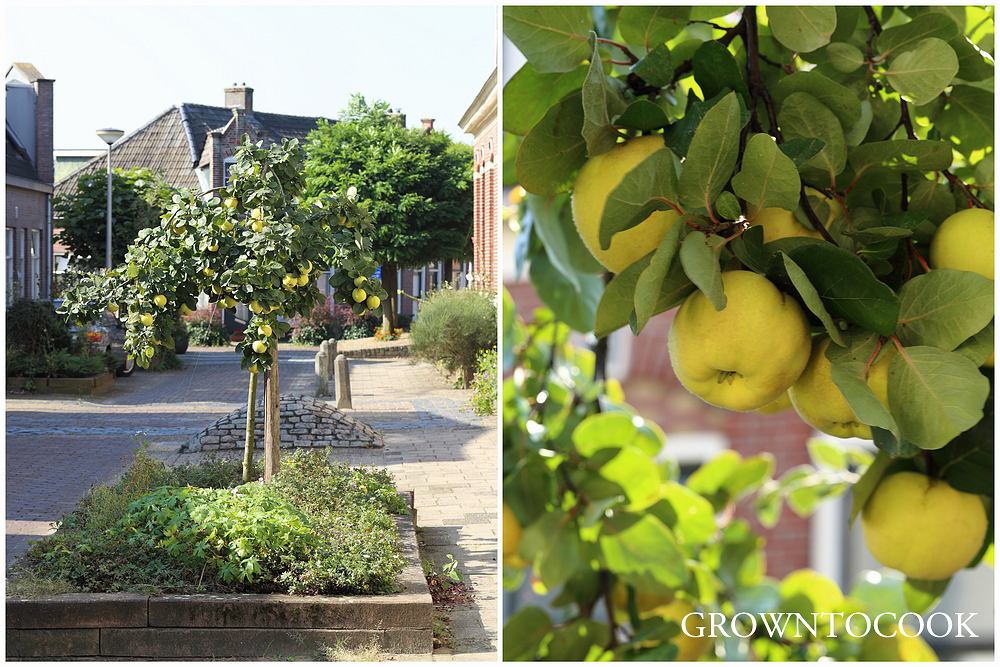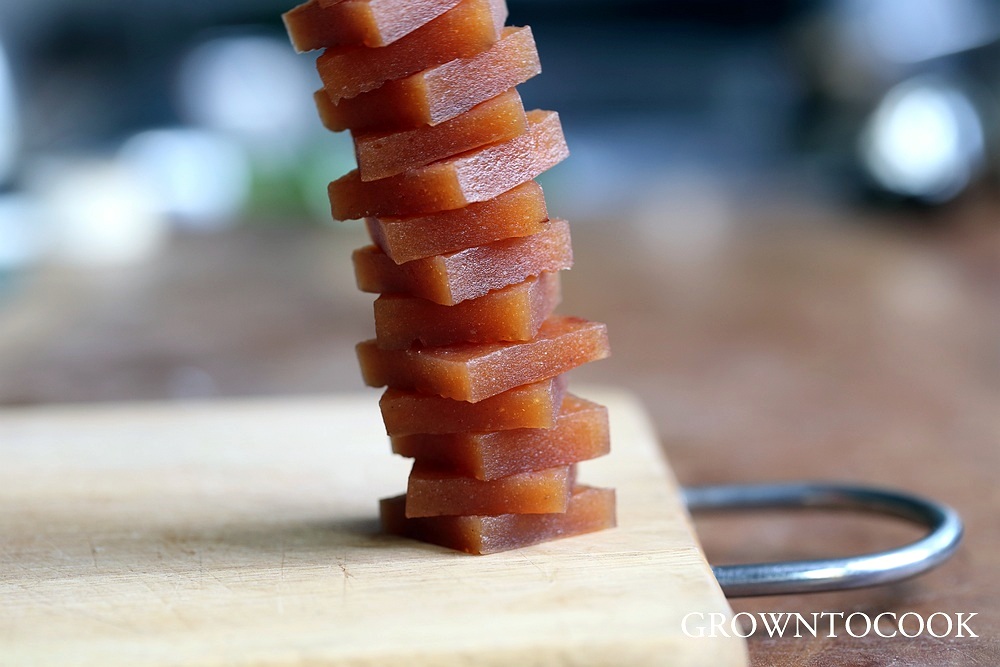
There is a quince tree in the middle of our street. It is there because I wanted to grow quince really badly, yet had no room left in our garden. So when one of the big raised beds in our street had to be replanted, I persuaded all our neighbors that a quince tree was exactly what our street needed. It has a lot going for it: beautiful large pink blossoms in spring, dark green fuzzy leaves and huge fragrant fruits in fall. It is also self-fertile and requires minimal pruning.

Last year the tree fruited for the first time and one of our neighbors picked the fruits and made a quince liqueur that he poured small shots of during our neighborhood “sweep the street” morning in April for everyone to taste. Which I think was a nice way of turning the fruits into something that ties our community together. Later the tree needed a new support and so we brought a chestnut pole, our neighbors brought a soil drill and another neighbor donated an old leather belt to tie the tree to the pole and together, we fixed it.


This year our liquor-making neighbor moved away, so it was my turn to pick the fruit. I have already made poached quince and baked quince and then turned to membrillo which is also the first quince recipe I have ever made, somewhere at the beginning of my love affair with quince. In case you’re not familiar with membrillo (or “ dulce de membrillo”), it is a quince paste or quince cheese traditionally made in Spain and Portugal. Apparently, in those sunny countries membrillo is sold on every corner and eaten with Manchego cheese during the tapas hour. Since membrillo is not sold on any corner in our city, the only way for us is to enjoy it, is plant a quince tree and make our own. It’s an easy three ingredient recipe (plus water) that only requires some patient stirring.

There are two ways to deal with the rock hard quince fruit in this case: either you peel and core it before boiling it, in which case you do not need to sieve it later. Or you chop the unpeeled fruits and sieve them after they have been boiled to softness. I have done it both ways but because the pectin in the peel and core helps to set the membrillo, I prefer the latter. However, you can choose whichever way suits you.
I like to pour the paste into pretty moulds but simple squares are just as good.

How to eat membrillo: as mentioned above, it pairs really well with creamy cheeses. Or enjoy it on its own, as candy, for which purpose it can also be coated with melted chocolate. Pieces of membrillo can also be melted into sauces and casseroles for more flavor.
A word about the photos in this post:
When I was taking the pictures, Esther who was taking a break from studying, wandered into the kitchen. I offered her the camera to play around and (somewhat to my surprise) she really got into it. So half of the photos in this post are hers, incuding this artistic attempt, where she stacked all the squares and tried to photograph them toppling over:

Other things to do with quince; Sweet and sour quinces with dried fruit, Winter greens and poached quince salad
Membrillo
2 kg (4 1/2 pounds) quince
300 ml (1 ¼ cup) water
sugar (see bellow for quantity)
½ tsp cinnamon
Wipe the fuzz off the quinces, wash the fruit and chop coarsely. Put the quince in a large, heavy-bottom pan and add the water. Bring to boil and simmer gently until the fruit is soft, about 30 to 40 minutes.
Let cool slightly and press through a sieve or mouli. Measure the pulp and add 350 g (1 ¾ cup) of sugar for every 600 ml (2 1/2 cup). This amount of quince should give you about 1200 ml of pulp, to which you then need to add 700 g of sugar. Put the pulp back in the pan and add the cinnamon. Heat gently, stirring until the sugar dissolves. Raise the heat and boil, stirring continuously to prevent it from catching. The mixture is hot and tends to splatter so it is a good idea to use an oven mitten to protect your hand.
Continue boiling and stirring until the quince paste thickens and turns a beautiful russet color. It is thick enough when you can draw a distinct line in the pulp with your wooden spoon.
Pour the quince paste onto a lightly oiled baking sheet or spoon it into oiled molds.
Leave to dry, uncovered, at room temperature for 2 to 3 days. Cut into small squares and store in a tin, layered between pieces of grease-proof paper.
4 comments for “Membrillo”